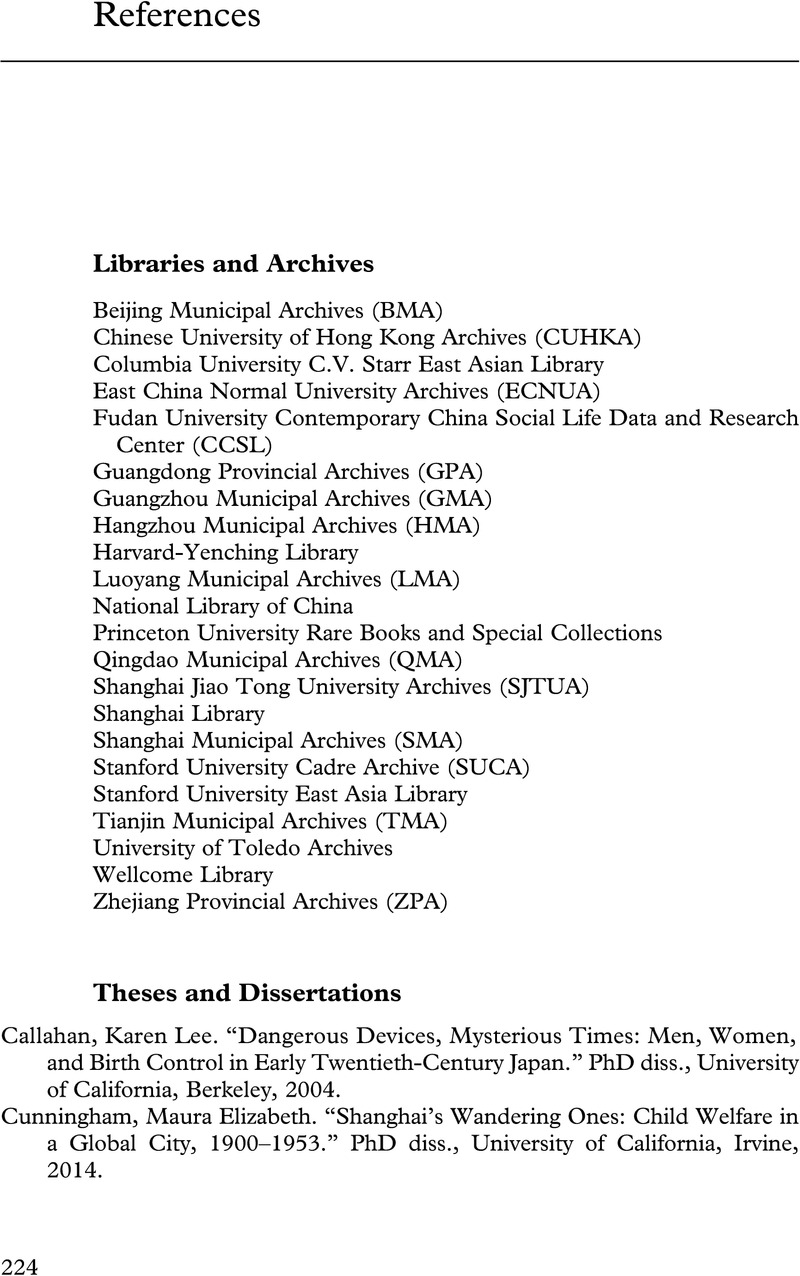Book contents
- Reproductive Realities in Modern China
- Cambridge Studies in the History of the People’s Republic of China
- Reproductive Realities in Modern China
- Copyright page
- Contents
- Figures
- Tables
- Acknowledgments
- Note on the Text
- Introduction
- 1 Building a Fitter Nation: Eugenics, Birth Control, and Abortion in Public Discourse, 1911–1949
- 2 Birth Control in Practice
- 3 Reaping the Fruits of Women’s Labor: Birth Control in the Early PRC, 1949–1958
- 4 “Birth Planning Has Many Benefits”: Weaving Family Planning into the Fabric of Everyday Life, 1959–1965
- 5 Controlling Sex and Reproduction across the Urban–Rural Divide, 1966–1979
- 6 The Rise and Demise of the One Child Policy, 1979–2015
- Epilogue: Birth Control and Abortion in the Longue Durée, 1911–2021
- Appendix: Interviews
- Glossary
- References
- Index
- References
References
Published online by Cambridge University Press: 19 January 2023
- Reproductive Realities in Modern China
- Cambridge Studies in the History of the People’s Republic of China
- Reproductive Realities in Modern China
- Copyright page
- Contents
- Figures
- Tables
- Acknowledgments
- Note on the Text
- Introduction
- 1 Building a Fitter Nation: Eugenics, Birth Control, and Abortion in Public Discourse, 1911–1949
- 2 Birth Control in Practice
- 3 Reaping the Fruits of Women’s Labor: Birth Control in the Early PRC, 1949–1958
- 4 “Birth Planning Has Many Benefits”: Weaving Family Planning into the Fabric of Everyday Life, 1959–1965
- 5 Controlling Sex and Reproduction across the Urban–Rural Divide, 1966–1979
- 6 The Rise and Demise of the One Child Policy, 1979–2015
- Epilogue: Birth Control and Abortion in the Longue Durée, 1911–2021
- Appendix: Interviews
- Glossary
- References
- Index
- References
Summary

- Type
- Chapter
- Information
- Reproductive Realities in Modern ChinaBirth Control and Abortion, 1911–2021, pp. 224 - 244Publisher: Cambridge University PressPrint publication year: 2023



